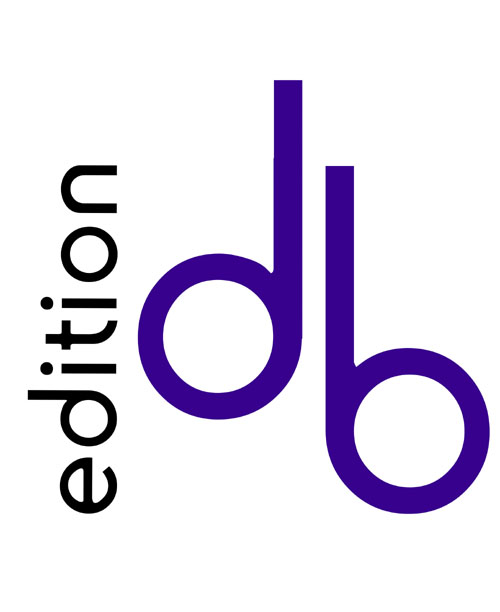
- 7 clarence grove
- horsforth
- leeds, LS18 4LA
- UK
- tel: 0113 258 1300
- order online
- order by fax
- www.editiondb.com
- 0113 258 2556
- info@editiondb.com
Review - Concert Suite for horn and piano by Anthony Randall
edb 0702002 Chamber Music series
This is an enormously impressive piece, perhaps the composer’s most important work for horn and piano to date (completed in January 2007). On a technical level it is of ‘diploma’ standard of difficulty for both instruments.
The Suite’s 1st movement, ‘Capriccio’, begins, after a brief piano introduction, with a smooth and beguiling horn melody firmly rooted in Eb, faintly reminiscent of York Bowen although Tony Randall intimated to me that he did not know the Bowen Sonata at all. There is an effortless harmonic glide into the B minor tonality of the animated middle section, which is the ‘Capriccio’ heart ofthe movement, with some tricky but highly effective piano writing to offset the horn’s multi-accented athleticism.
In the 2nd movement, ‘Notturno’, bitonal muted horn arpeggios are directed at the piano’s soundboard, its sustaining pedal generating some ear-tickling resonances. The movement’s gently astringentbut logical harmonic style hints at the 1st movement’s Eb roots, so that we never lose our tonal bearings.
‘Introduction and Rondo’, the 3rd and final movement, begins in a declamatory, portentous mood before plunging into a rollicking and highly tuneful 6/8 Rondo. There are many challenging scale passages for both instruments, and an overall mood of high-spirited effervescence. The brief coda includes a 2-octave-and-a-tone glissando and an ecstatic trill on high A.
This superb Suite is written at a high level of inspiration throughout, and is a brilliant addition to the recital repertoire.
Horn players who are already familiar with edition db will know by now that this publisher’s overall presentation and, of course, legibility is exemplary throughout.
© Anthony Halstead 2007
Anthony Halstead, The Horn Player, December 2007
Review - Concert Suite for horn and piano by Anthony Randall
edb 0702002 Chamber Music series
British hornist, composer, conductor, and teacher Anthony Randall has had a distinguished career that has led to several nice works for horn (see, for example, a review of his Portrait for Ifor James in the October 2007 issue of The Horn Call). Simply put, Concert Suite is an outstanding work for horn and piano. The three movements total about 18 minutes, and each is successful in its own right. The first movement, “Capriccio”, has an ABA form, with lyrical outer sections and an “Energico” middle section that is forthright and spirited. The second movement, “Notturno”, is slow and very effective at generating interesting colors, not the least of which involves directing the horn sound into the piano to create interesting resonances. I found the mix of stopped, muted, and open colors is especially appealing in a “nocturnal” context. The last movement, “Introduction and Rondo”, begins with a reminiscence of the first movement, and then launches into a rollicking Vivace rondo that Mozart would be proud of, filled with fire and humor. The meter changes alone provide enough excitement, but the pitch bending, fanfare/hunting figures, and other miscellaneous extended techniques will keep at least the horn player riveted.
Taken as a whole, the work is well-crafted and well-paced. The overall harmonic language is quite tonal, but colored in interesting and occasionally surprising ways. The work is clearly for more advanced players, but the end result should be quite satisfying and well worth the work. All we need now is a commercial recording of the piece, and I expect its popularity will take off. Anthony Randall has crafted what I think will become a major contribution to our recital repertoire, and I look forward to hearing how its performance life develops.
Jeffrey Snedeker, The Horn Call, IHS, Vol XL No.3, May 2010